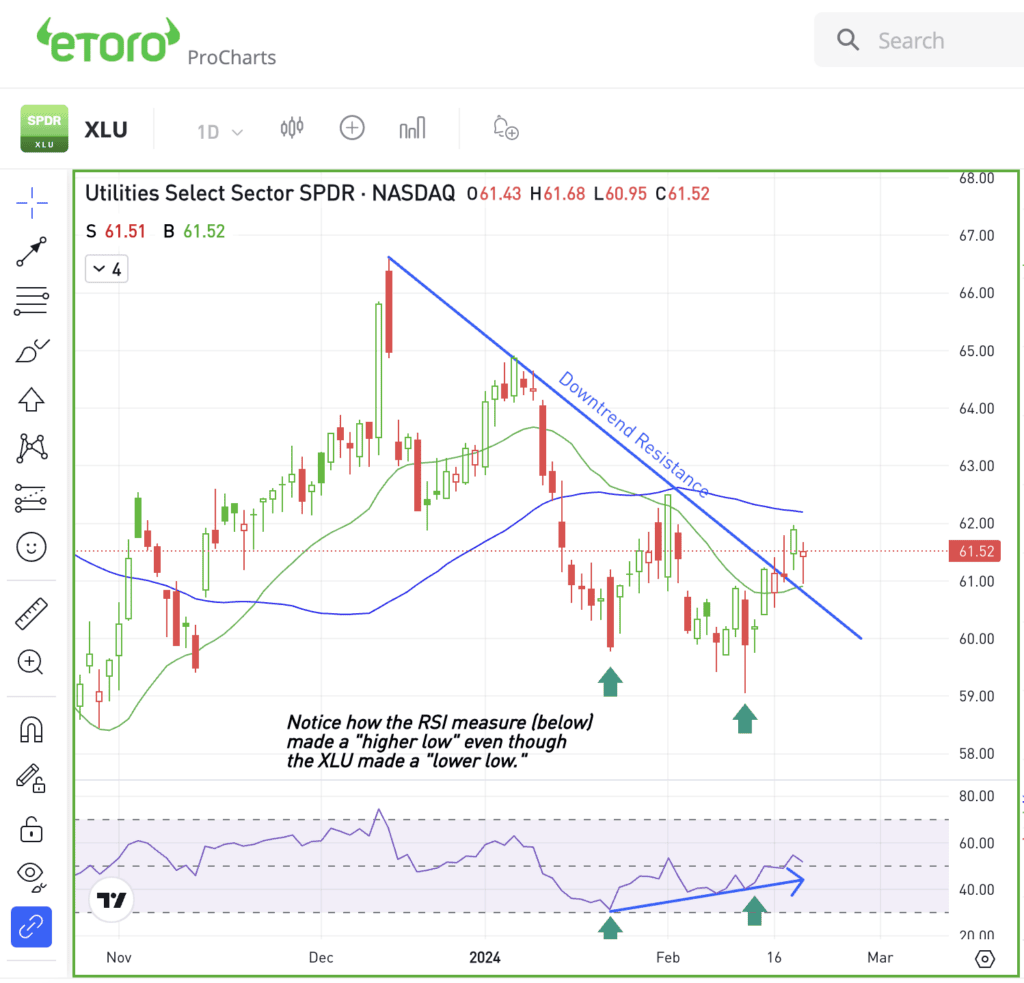Remember, each Friday will be a hybrid version of The Bottom Line and The Daily Breakdown, with an in-depth look under the hood in the “What’s happening” section, followed by our typical version of “The setup.”
Friday’s TLDR
- Nvidia leads tech surge.
- The “bubble” word is being uttered.
- Utility stocks showing promise?
What’s happening
With AI becoming a dominant theme in technology, we’ve seen a robust reaction in AI stocks. Nvidia’s earnings report on Wednesday night was the latest development and bulls are looking at it as another cherry on top.
The stock exploded 16.4% on Thursday, hitting all-time highs in the process and reigniting the bull trade in semiconductors.
The SMH ETF — a popular semiconductor ETF — surged 6.8%, while AMD, Super Micro Computer and others joined in on the party. Even the Nasdaq was feeling it, rallying 3% on Thursday.
However, it’s got investors wondering just how sustainable a rally like this can be.
In the case of Nvidia, there’s been impressive growth under the hood. Demand for AI chips continues to outpace supply. Not only has this allowed certain companies to bolster revenue, but some have also grown margins and earnings.
Yet the recent price action has the “B-word” — bubble — floating around financial circles. It’s easy to look at a stock chart and see gains of 500% to 600% or more in just a couple of quarters and deduce that the asset is in bubble territory. However, investors really need to look below the surface to see if that’s the case.
Remember, this isn’t an all-or-none situation either. Like all industries, there are high-quality and low-quality stocks. Even the companies that have a lot of promise and strong businesses can see their stocks become overheated in the short term.
But to call it a bubble simply because the stock has gone up in rapid fashion isn’t right if the fundamentals back it up.
Here’s one example.
A year ago, consensus estimates forecast Nvidia to earn $5.77 a share for this fiscal year. At the time, Nvidia was trading around $232 per share — roughly 40 times those earnings estimates. Now? Shares are trading above $775, but because analysts now expect it to earn about $24.50 this year, the stock actually trades at less than 32 times those estimated earnings.
This is just one example. And I’m not making a case for or against the stock based on its valuation. However, I’m trying to highlight how some of these stock rallies — regardless of how crazy they may seem — can be driven by more than just hot air and momentum. Whether Nvidia is overvalued, undervalued, or fairly valued is debatable. What’s not debatable is that it has seen a big bump in its business.
Sometimes, there are real fundamental shifts occurring in these industries. When that happens, investors need to look under the hood to see if the fundamentals are backing up what’s happening on the charts. It doesn’t make the stocks immune, but it can at least give a little more insight to what’s behind the rally.
Want to receive these insights straight to your inbox?
The setup — XLU
The utilities sector ETF — the XLU — roared higher in late Q4 on the premise that the Fed would start cutting rates sooner and more aggressively than previously thought.
However, as rate-cut expectations continue to get pushed back, utilities, real estate, bonds, and other rate-sensitive assets have suffered. For context, utilities and real estate are the only two S&P sectors that have declined year to date, down 2.9% and 3.5%, respectively.
Now though, utilities are showing a little life.

It’s far from a roaring rally, but XLU recently broke out over downtrend resistance. Further, note how the stock made a lower low in February, dropping to nearly $59.
However, the RSI measure — which is a technical indicator that measures how overbought or oversold a security is — made a higher low. In the technical world, this is what’s known as “bullish divergence.”
Note that this does not guarantee a bullish outcome. However, it’s one positive development working in XLU’s favor.
Combine that with the breakout and it’s possible that XLU could enjoy more upside. That becomes more likely if and when there’s more clarity around future rate cuts, but unfortunately, that’s not the case at the moment.
If XLU can stay above the recent low near $59, it’s hard to get too bearish. Conversely, if the ETF can clear the $63 to $64 area, more upside could ensue.
Disclaimer:
Please note that due to market volatility, some of the prices may have already been reached and scenarios played out.






